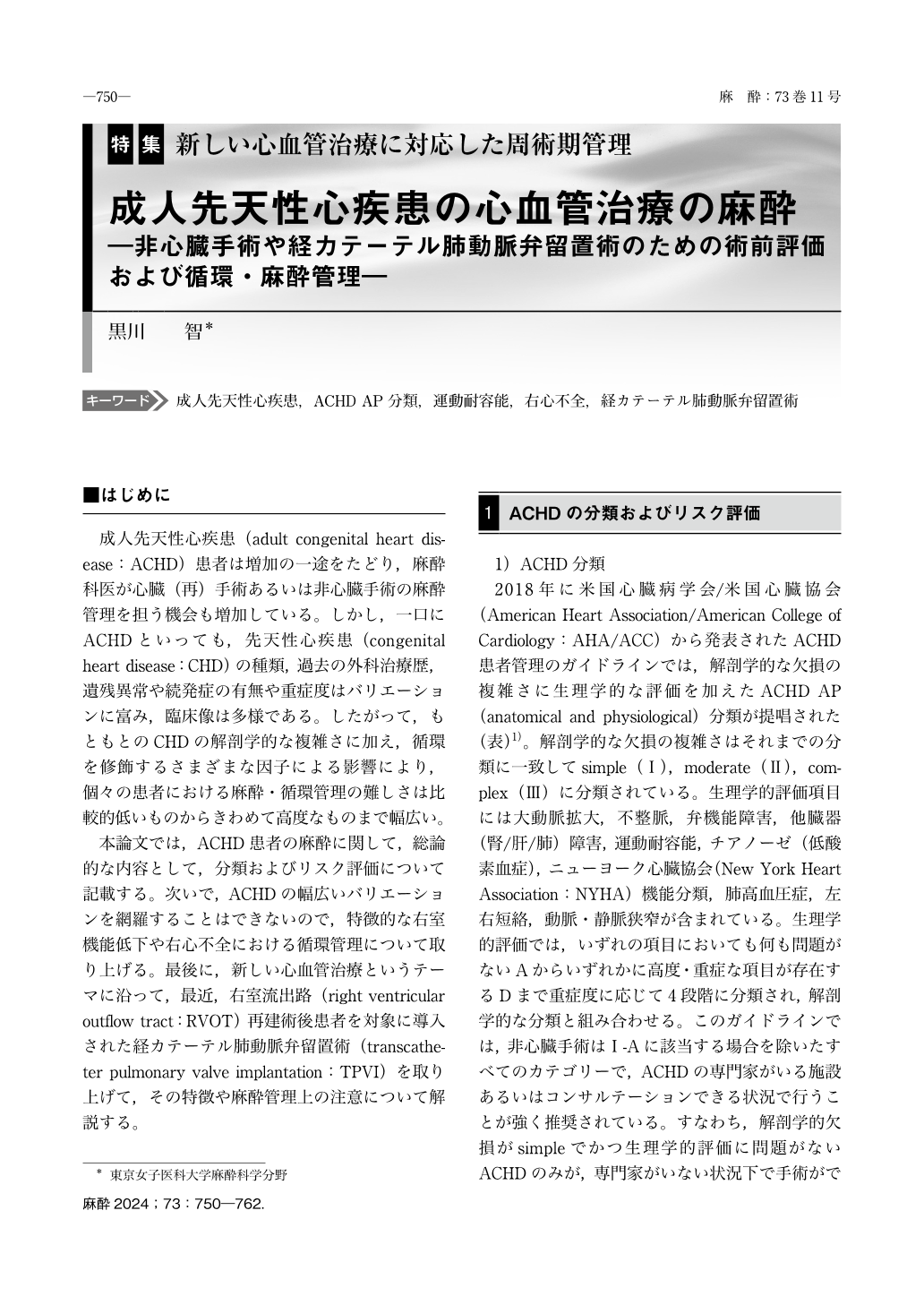Japanese
English
- 有料閲覧
- Abstract 文献概要
- 1ページ目 Look Inside
- 参考文献 Reference
はじめに
成人先天性心疾患(adult congenital heart disease:ACHD)患者は増加の一途をたどり,麻酔科医が心臓(再)手術あるいは非心臓手術の麻酔管理を担う機会も増加している。しかし,一口にACHDといっても,先天性心疾患(congenital heart disease:CHD)の種類,過去の外科治療歴,遺残異常や続発症の有無や重症度はバリエーションに富み,臨床像は多様である。したがって,もともとのCHDの解剖学的な複雑さに加え,循環を修飾するさまざまな因子による影響により,個々の患者における麻酔・循環管理の難しさは比較的低いものからきわめて高度なものまで幅広い。
本論文では,ACHD患者の麻酔に関して,総論的な内容として,分類およびリスク評価について記載する。次いで,ACHDの幅広いバリエーションを網羅することはできないので,特徴的な右室機能低下や右心不全における循環管理について取り上げる。最後に,新しい心血管治療というテーマに沿って,最近,右室流出路(right ventricular outflow tract:RVOT)再建術後患者を対象に導入された経カテーテル肺動脈弁留置術(transcatheter pulmonary valve implantation:TPVI)を取り上げて,その特徴や麻酔管理上の注意について解説する。
With the much improved outcomes of cardiac surgery for congenital heart disease, the number of adult patients with congenital heart disease undergoing noncardiac surgery has increased. In addition, patients with more severe cardiac sequelae and those at risk for heart failure are increasingly eligible for surgery, requiring anesthesiologists to become proficient in the evaluation and anesthetic management of adult patients with congenital heart disease. This review describes the classification of adult congenital heart disease, the necessary evaluations with a focus on exercise tolerance, and the diagnosis and circulatory management of right heart failure;it concludes with an overview of transcatheter pulmonary valve replacement(which has only recently been introduced into clinical practice)and the essentials of anesthetic management.

Copyright © 2024 KOKUSEIDO CO., LTD. All Rights Reserved.


